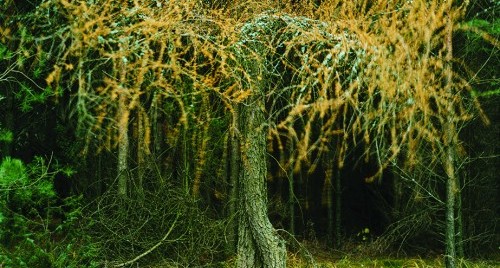From November 4th 2014 to Janaury 15th 2015
TRACES {1}
« The Holocaust is part of my life story. My grandparents, as well as a large part of my family, were
murdered by the Nazi regime in the death camps in Poland and in the forests of the Baltic countries. My father is one of the few survivors. At the age of six, he was separated from his family and sent to the Westerbork camp in the Netherlands and then to Theresienstadt in Czechoslovakia. In 1945 he was included in a prisoner exchange arranged by the Red Cross and then sent to an orphanage in Switzerland. After the war, he went to live with his aunt in Brazil. So I was born in Porto Alegre, in the state of Rio Grande do Sul.
When I was a child, my father spoke little of this period. Later, upon my insistence, he started to tell me more about his story. Twice we travelled together along the paths of his deportation : in the Netherlands and in the Czech Republic. But he did not wish to come with me to Sobibor, where his parents had died.
I decided to carry on on my own in my search for traces of this past. I discovered the death camps of Auschwitz-Birkenau and Sobibor in Poland, where many members of my family were killed. I travelled to other extermination sites : the camps of Majdanek and Treblinka in Poland, the forests of Bikernieki
and Rumbula in Latvia, the forest of Ponary and the Ninth Fort in Lithuania. In these sites, far from cities and surrounded by forests, I found buildings and ruins. Often there was no visible trace left, just a forest, a clearing, memorial plates and monuments.
I wondered how to portray my grandparents, whom I never met. I found myself in this land trodden by them and by many others. I walked along the paths they might have walked, I saw the landscapes they might have seen. In these sites, where ashes and blood mixed with the earth, I sensed an invisible dimension. The silent vegetation brought to my mind images and sounds.
I feel the need to photograph this experience : to capture the absence and the memory… to portray that which can no longer be seen and those who can no longer be seen.
*The {1} after Traces is to indicate that the project is not quite complete. »
Roberto Frankenberg
The exhibition is accessible to the public during the opening hours of the Paris Yiddish Center. This exhibition is presented under the auspices of Maison européenne de la photographie in the framework of Mois de la photo à Paris, November 2014.
Free admission
Opening Thursday, November 6th at 18:3o




















